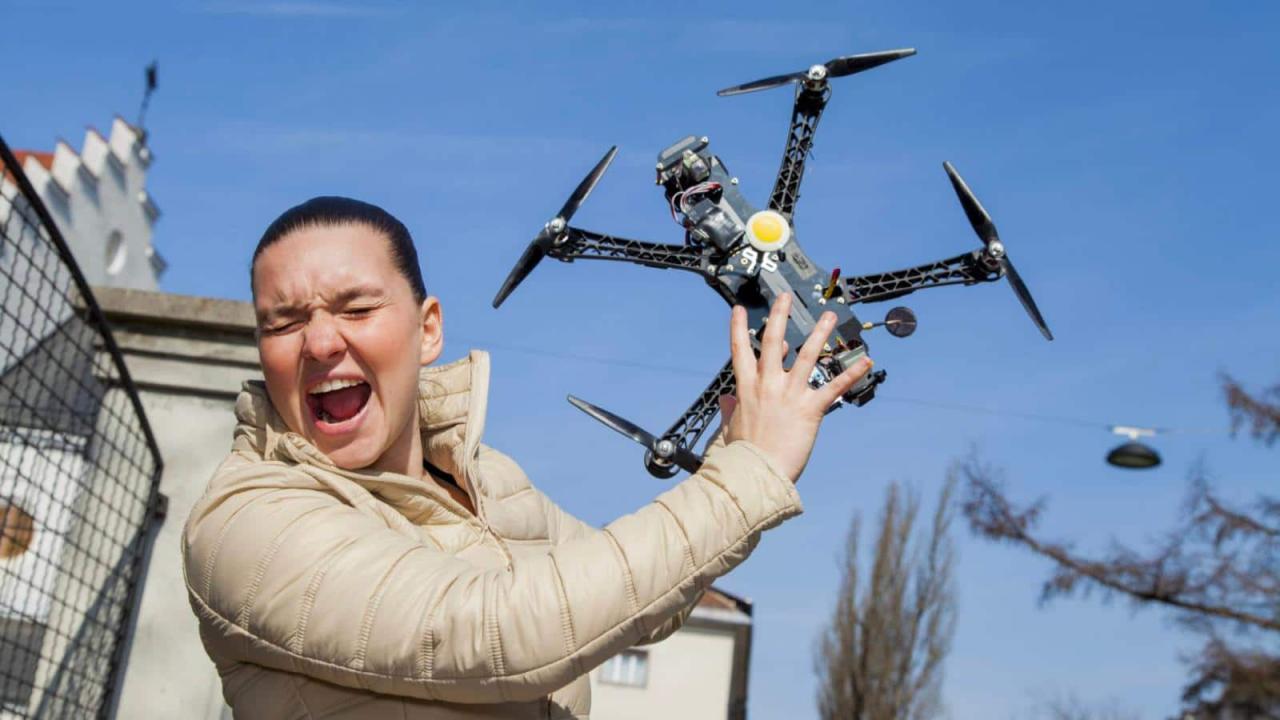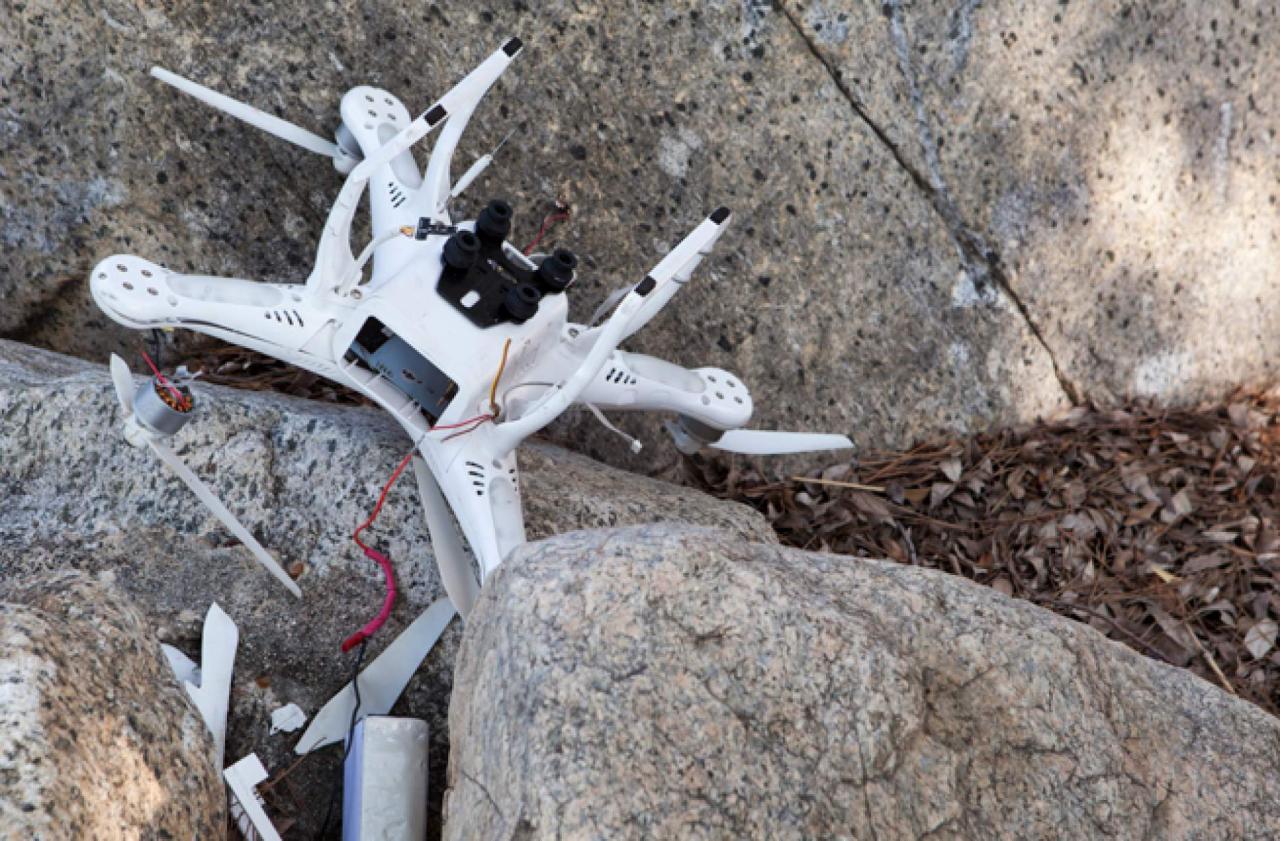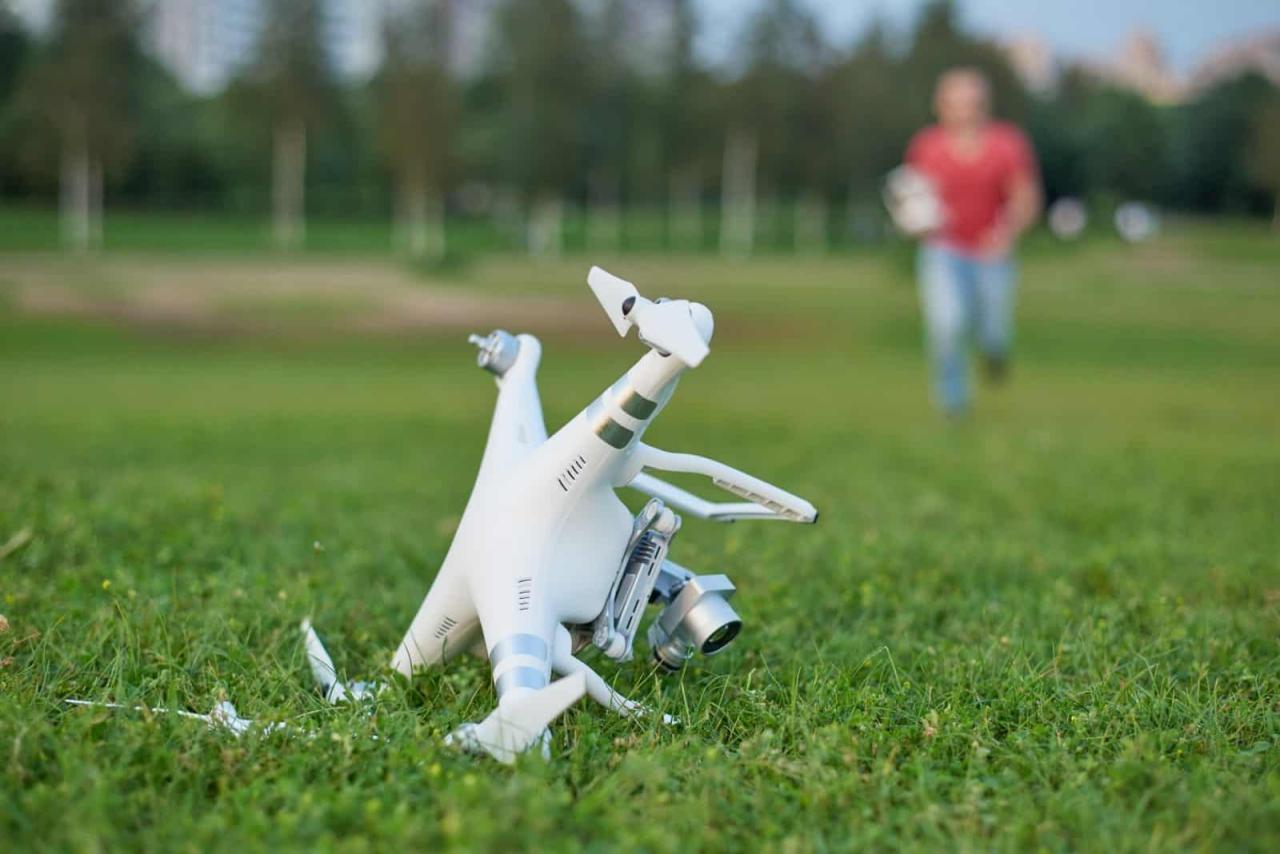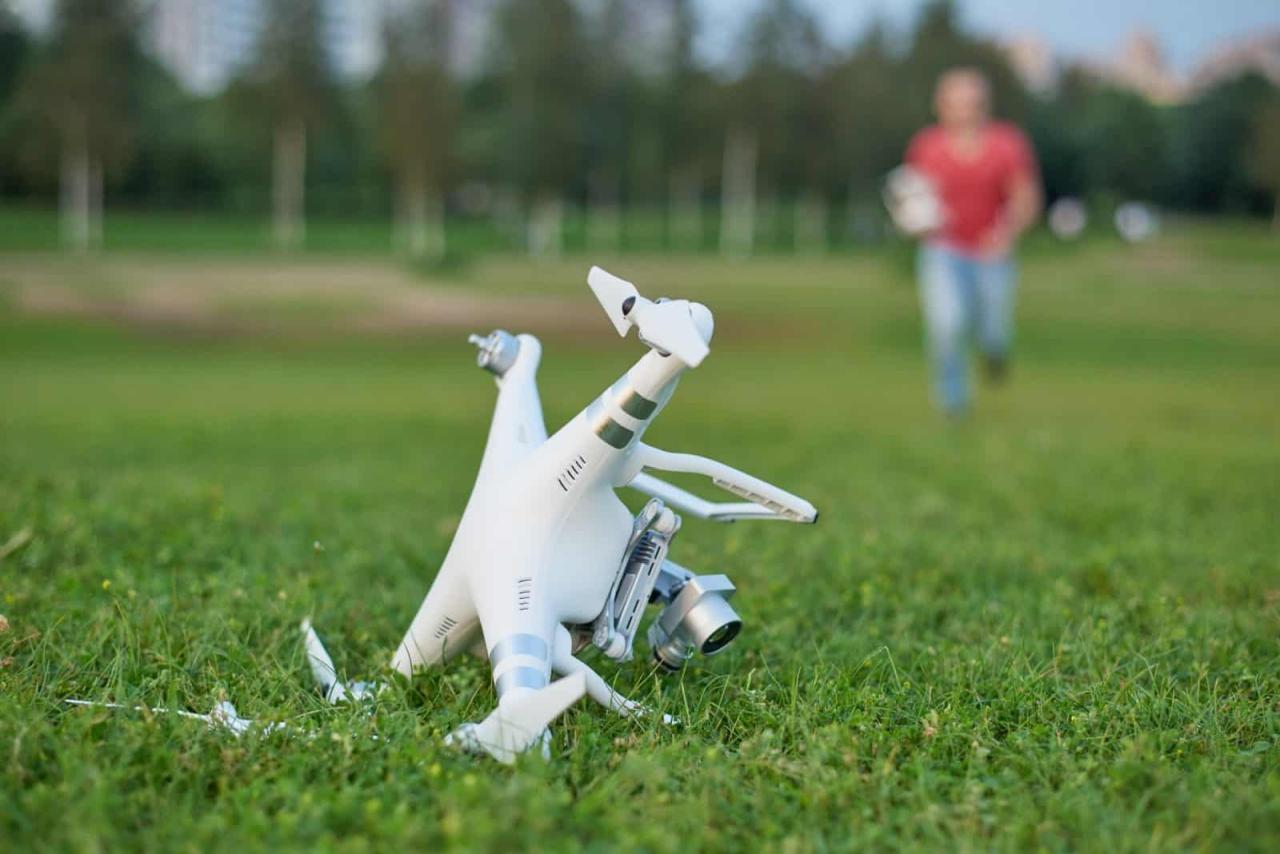Drone crash in Paris: Imagine the scene – a sudden, unexpected crash of a drone in the heart of the city. This event sparks immediate questions: What caused it? What was the damage? How will this impact drone regulations and public perception? We’ll delve into the immediate aftermath, the investigation, drone regulations, public reaction, and long-term implications of this incident, providing a comprehensive overview of this significant event.
That drone crash in Paris got me thinking about how easily things can go wrong with these things, even with careful planning. It’s a reminder that even professional drone shows, like the ones discussed in this article about a drone show accident , require meticulous safety protocols. The Paris incident highlights the potential for accidents, no matter the scale of the operation.
We’ll explore the technical specifications of the drone involved, examine potential causes ranging from mechanical failure to pilot error, and analyze the media’s portrayal of the event. We’ll also discuss the crucial role of safety regulations and preventative measures in preventing future incidents, highlighting the need for improved drone technology and stricter enforcement.
Drone Crash in Paris: A Detailed Analysis
A drone crash in Paris would undoubtedly cause significant disruption and raise several critical questions. This analysis delves into the immediate aftermath, investigation, regulations, public reaction, and long-term implications of such an event, offering a comprehensive understanding of the complexities involved.
Immediate Aftermath of the Crash

The scene immediately following a drone crash in a bustling city like Paris would be chaotic. Emergency responders, including police and potentially firefighters, would rush to the location to secure the area and assess the situation. Witness accounts would vary, with some describing the drone’s flight path and others focusing on the impact and subsequent damage. Initial reports from various news outlets would likely be fragmented and potentially contradictory, as information gathers and is verified.
The extent of damage could range from minor property damage (e.g., broken windows) to more significant structural damage, depending on the size and weight of the drone, its speed at impact, and the location of the crash. Injuries to people or disruption to public services, such as traffic or power outages, are also possibilities.
| Source | Time of Report | Key Details | Reliability Assessment |
|---|---|---|---|
| Agence France-Presse (AFP) | 14:30 CET | Drone crashed near Eiffel Tower; minor property damage reported. | High – Established news agency |
| Le Parisien | 14:45 CET | Drone impact caused a small fire; witnesses reported loud noise. | High – Major Parisian newspaper |
| Local News Blog | 15:00 CET | Drone reportedly malfunctioned mid-flight; no injuries. | Medium – Unverified source |
| Twitter User @ParisDroneCrash | 15:15 CET | Video footage of the crash site showing debris. | Low – Requires verification |
Investigation and Cause Determination, Drone crash in paris
Investigations into drone crashes typically follow a structured process involving multiple steps. Authorities would secure the crash site, collect evidence (drone wreckage, witness statements, video footage), and analyze the data to determine the probable cause. Possible causes could include mechanical failure (e.g., motor malfunction, battery failure), pilot error (e.g., loss of control, improper operation), or external factors (e.g., adverse weather conditions, interference from other electronic devices).
A thorough investigation would involve examining the drone’s flight logs (if available), interviewing the drone operator (if identified), and analyzing weather data from the time of the incident. Experts in aviation and drone technology would be consulted to provide technical insights.
Drone Specifications and Regulations
The type of drone involved would significantly influence the investigation and the subsequent regulatory response. Identifying the manufacturer, model, and capabilities of the drone is crucial. Paris, like many major cities, has specific regulations governing drone operation, including restrictions on flight altitude, airspace limitations, and operational permits. These regulations often differ from those in other major cities, reflecting unique geographical and security concerns.
Potential safety improvements could include mandatory registration, improved GPS systems, autonomous collision avoidance systems, and geofencing technology.
- Mandatory drone registration
- Enhanced GPS systems with real-time tracking
- Autonomous collision avoidance systems
- Geofencing technology to restrict flight zones
- Improved pilot training and certification programs
Public Reaction and Media Coverage

Public reaction to a drone crash in Paris would likely be a mix of concern, curiosity, and potentially anger, depending on the extent of the damage and any injuries involved. Social media would play a significant role in disseminating information and shaping public opinion. Media coverage would vary in tone and perspective, ranging from factual reporting to sensationalized accounts. Headlines and news reports would reflect the prevailing sentiment and narrative.
A timeline of media coverage would show an initial flurry of reports followed by more in-depth analyses and investigations. Over time, the focus might shift from immediate consequences to broader discussions about drone safety and regulations.
Long-Term Implications and Preventative Measures
A significant drone crash in Paris could have long-term implications for drone regulations and public perception. Authorities might implement stricter rules, increasing scrutiny of drone operations and potentially limiting their use in certain areas. Public trust in drone technology could decrease, impacting the acceptance and adoption of drones for commercial and recreational purposes. Preventative measures would focus on technological advancements, stricter regulations, and enhanced public education.
So, a drone crashed in Paris, right? It got me thinking about other drone mishaps, like that crazy orlando drone show accident – totally different scale, but still highlights the risks involved. Anyway, back to the Paris crash; investigators are probably looking at similar factors like malfunction or pilot error.
Technological improvements, such as more sophisticated GPS systems and autonomous collision avoidance technologies, are crucial. Strengthening regulatory frameworks and enforcement mechanisms is equally important. Public awareness campaigns can educate drone operators and the public about safe drone operation practices.
Illustrative Example: A Visual Depiction
Imagine the scene: The late afternoon sun casts long shadows across the cobblestone streets of a Parisian neighborhood. The drone, a sleek, black quadcopter, lies broken amidst scattered debris near a bustling cafe. A section of a nearby building shows minor damage, a small crack in the window. The air is thick with the smell of burnt electronics.
The sound of sirens fades into the background as emergency responders work methodically, securing the area and documenting the scene. The overall atmosphere is one of shock and disbelief, mixed with a sense of relief that no serious injuries occurred. The drone’s propellers are twisted and broken, indicating a high-impact collision. The surrounding area is cordoned off by police, keeping onlookers at a safe distance.
That drone crash in Paris really highlights the risks involved in drone technology, huh? It makes you think about the planning and safety measures needed for large-scale drone displays, unlike what you see at a well-organized event like the florida drone show. Hopefully, incidents like the Paris crash will push for better regulations and safer operating procedures for all drone operations, preventing future accidents.
Wrap-Up

The drone crash in Paris serves as a stark reminder of the potential risks associated with drone technology in densely populated urban environments. Understanding the causes, analyzing the response, and implementing robust preventative measures are crucial steps to ensure safer integration of drones into our cities. By learning from this incident, we can pave the way for responsible drone operation and mitigate future risks.
The investigation’s findings, coupled with public awareness and technological advancements, will ultimately shape the future of drone safety and regulation.
FAQ Explained: Drone Crash In Paris
What type of drone was likely involved?
The exact model is usually determined during the investigation, but information about size, capabilities, and manufacturer will likely emerge.
Were there any injuries?
The extent of injuries, if any, would be detailed in official reports following the investigation. This information would be released by authorities.
How long did the investigation take?
Drone crash investigations vary in length, depending on the complexity of the incident and the thoroughness of the process. It can range from weeks to months.
What were the immediate actions taken after the crash?
Typically, emergency services would secure the area, assess the damage, and begin preliminary investigations. Witness statements would also be collected.
